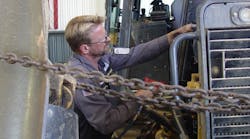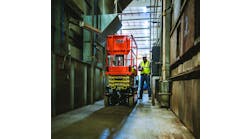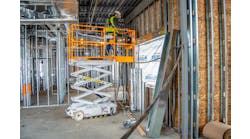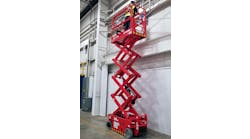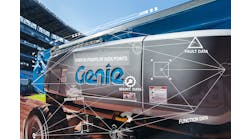RER: In a more competitive era, how have the service challenges changed?
Hofmeyer: Even with the improved economy, customers are telling us that job bidding remains extremely tight and there is little margin for error. Therefore, customers expect rental equipment to be highly reliable with minimal downtime.
Is there greater pressure to be on time when it comes to breakdowns on jobsites?
There is no doubt. Customers today keep better metrics on their end measuring jobsite productivity and are more than happy to share with you any lost productivity due to downtime and often are able to equate that in perceived dollars lost.
Is your company more proactive about doing preventive maintenance on the jobsite than in the past?
Yes. We have a full time preventative maintenance department that dispatches field service technicians often after hours or on weekends to maximize equipment operation and minimize customer inconvenience.
How have telematics and remote diagnostic capabilities helped your company deal with jobsite service issues? What about electronic codes on machines that might enable your service technicians to know what the problem is before going out to the jobsite?
We utilize proprietary software to both track hours to identify when PM’s are required and also are able to often diagnose machines from fault codes transmitted via GPS. This enables us to be certain that the technician dispatched has proper parts on the truck and often eliminates troubleshooting since we have a pretty good idea of what is wrong with the machine prior to arrival. We’ve had instances where we’ve shown up on a jobsite to fix a problem before the customer even realized anything was wrong! And they really appreciate the fact that we proactively deal with minor issues before they lead to larger ones.
Are service trucks better equipped than in the past? What capabilities do your service trucks have and what repairs are your service technicians capable of making on the job site?
We are replacing 11 trucks this year and are going with larger and better equipped versions of their predecessors. With rare exception, our trucks today are equipped to enable technicians to do almost all repairs in the field.
What are the expectations of your customers regarding how quickly you respond to breakdowns? Do you chart or measure your response times in order to continually improve in this era?
Everything is logged down to the minute from when customer calls in to when the technician is dispatched, arrives on site and completes the job. Our executive team regularly reviews response time from a benchmark perspective to identify areas we can improve. We also survey our customers each month and review their impression of how we are doing.
How has the organization of your service department evolved in recent years?
Telematics has changed the game since we can review fault codes and machine condition monitoring. Information is far better than it used to be and helps us identify problematic issues or helps to better indicate, for example, what parts we need to stock. We also do regular extensive fluid sampling and testing to diagnose early component failures. Our check-in and final check over process is far more advanced, documented and thorough.
